Critical Art Ensemble - Observations On Collective Cultural Action
Monday, April 30, 2007
Critical Art Ensemble (CAE) is a collective of five new-genre artists formed in 1987. Since that time, the group has produced artworks, events, and theory that explore and critique models of representation used in the capitalist political economy to sustain and promote authoritarian policies, CAE has also had a sustained interest in the variety of organizational possibilities from which artistic practice can emerge. Of particular interest have been the types of collectives that intersect artistic and activist practices. It is only through an understanding of this particular branch of sociology that the group believes it can refine and improve its own structure and dynamics, which makes thoughtful cultural production possible. In turn, the group hopes that this research in microsociology will contribute as much to the continuation of resistant cultural models as our books or artworks.
The Double-Edged Sword of Market Demands
After reviewing the current status of the U.S. cuhural economy, one would have to conclude that market demands discourage collective activity to such a degree that such a strategy is unfeasible. To an extent, this perception has merit. Financial support certainly favors individuals. In art institutions (museums, galleries, art schools, alternative spaces, and so on), Jiirgen Habermas's thesis that modernity never died finds its practical illustration. In spite of all the critical fulminations about the death of origi nality, the artist, and the rest of the entities named on the tombstones in the modernist cemetery, these notions persist, protected by an entrenched cultural bureaucracy geared to resist rapid change. If anything, a backlash has occurred that has intensified certain modernist notions. Of prime importance in this essay is the beloved notion of the individual artist. The individual's signature is still the prime collectible, and access to the body associated with the signature is a commodity desired more than ever—so much so that the obsession with the artist's body has made its way into "progressive" and alternative art networks. Even community art has its stars, signatures, and bodies. A community art star must do a project that includes mingling with the "community" and with the project's sponsor (s). Mingling bodies is as important in the progressive scene as it is in the gallery scene. This demand for bodily commingling is derived from the most traditional notions of the artist hero, as it signifies an opportunity to mix with history and interact with genius. The totalizing belief that social and aesthetic values are encoded in the being of gifted individuals (rather than emerging from a process of becoming shared by group members) is cultivated early in cultural educa-tion. If one wants to become an "artist," there is a bounty of educational opportunities—everything from matchbook correspondence schools to ehte art academies. Yet in spite of this broad spectrum of possibihties, there is no place where one can prepare for a collective practice. At best, there are the rare examples where teams (usually partnerships of two) can apply as one for admission into institutions of higher learning. But once in the school, from administration to curriculum, students are forced to accept the ideological imperative that artistic practice is an individual practice. The numerous mechanisms to ensure that this occurs are too many to list here, so onl)-a few illustrative examples will be offered. Consider the spatial model of the art school. Classrooms are designed to accommodate aggregates of specialists. Studios are designed to accommodate a single artist or, like the classrooms, aggregates of students working individually. Rarely can a classroom be found that has a space designed for face-to-face group interaction.
On the public front, the situation is no better. If artists want grants for reasons other than the fact that they work in the nonprofit sector, they had better be working as individuals. Generally speaking, collective practice has no place in the grant system. Collectives reside in a liminal zone: they are neither an individual nor an institution, and there are no other categories. Seemingly there is no place to turn. Collectives are not wanted in the public sphere, in the education system, or in the cultural market (in the limited sense of the term), so why would CAE be so in favor of collective cultural action? Part of the answer once again has to do with market demands. Market imperatives are double-edged swords. There are just as many demands that contradict and are incommensurate with the ones just mentioned. Three examples immediately spring to mind. First, the market wants individuals with lots of skills for maximum exploitation—a veritable return to the "Renaissance man." An artist must be able to produce in a given medium, write well enough for publication, be verbally articulate, have a reasonable amount of knowledge of numerous disciplines (including art history, aesthetics, critical theory, sociology, psychology, world literature, media theory, history, and, given the latest trends, the various sciences), be a capable public speaker, a career administrator, and possess the proper diplomatic skills to navigate a variety of cultural subpopulations. Certainly some rare individuals do have all of these skills, but the individual members of CAE do not. Consequendy, we can only meet this standard by working collectively. Second, there is the need for opportunity. Given the overwhelming number of artists trained in academies, colleges, and universities over the past thirty years, adding to what is already an excessive population of cultural producers (given the few platforms for distribution), the opportunity for a public yoice has rapidly decreased. By specializing in a particular medium, one cuts one's opportunities even further. The greater one's breadth of production skills, the more opportunity there is. Opportunity is also expanded by breadth of knowledge. The more one knows, the more issues one can address. In a time when content has resurfaced as an object of artistic value, a broad interdisciplinary knowledge base is a must. Finally opportunity can be expanded through the ability to address a wide variety of cultural spaces. The more such spaces a person is comfortable working in, the more opportunity he or she has. If designed with these strategies in mind, collectives can configure themselves to address any issue or space, and they can use all types of media. The result is a practice that defies specialization (and hence pigeonholing). CAE, for example, can successively do a Web project, a stage performance at a festival, a guerrilla action, and a museum installation, followed by a book or journal project. Due to its collective strength, CAE is prepared for many cultural opportunities. Finally, the velocity of cultural economy is a factor. The market can consume a product faster than ever before. Just in terms of quantity, collective action offers a tremendous advantage. By working in a group, CAE members are able to resist the Warhol syndrome of factory production using underpaid laborers. Through collective action, product and process integrity can be maintained, while at the same time keeping abreast of market demand. These considerations may sound cynical, and to a degree they are, but they appear to CAE as a reality that must be negotiated if one is to survive as a cultural producer. On the other hand, collective action is rewarding beyond what can be understood through the utilitarian filters of economic survival.
Size Matters: Cellular Collective Construction
One problem that seems to plague collective organization is the catastrophe of the group reaching critical mass. When this point is reached, group activity violently explodes, and httle or nothing is left of the organization. The reasons for hitting this social wall vary depending on the function and intention of the group. CAE's experience has been that larger artist/activist groups tend to hit this wall once membership rises into the hundreds. At that point, a number of conflicts and contradictions emerge that cause friction. For one thing, tasks become diversified. Not everyone can participate fully in each, so committees are formed to focus on specific tasks. The group thus moves from using a direct process to a representational one. This step toward bureaucracy conjures feelings of separation and mistrust that can be deadly to group action and that are symptomatic of the failure of overly rationalized democracy. To complicate matters further, different individuals enter the group with differing levels of access to resources. Those with the greatest resources tend to have a larger say in group activities. Consequently, minorities form that feel under-represented and powerless to compete with majoritarian views and methods. (Too often, these minorities reflect the same minori-tarian structure found in culture as a whole.) Under such conditions, group splintering, if not group annihilation, is bound to occur. Oddly enough, the worst case scenario is not group annihilation, but the formation of a Machiavellian power base that tightens the bureaucratic rigor to purge the group of malcontents and to stifle difference. Such problems can also occur at a smaller group level (between fifteen and fifty members). While these smaller groups have an easier time avoiding the alienation that comes from a complex division of labor and impersonal representation, there still can be problems, such as the perception that not everyone has an equal voice in group decisions, or that an individual is becoming the signature voice of the group. Another standard problem is that the level of intimacy necessary to sustain passionately driven group activity rarely emerges in a midsize group. The probability is high that someone, for emotional or idiosyncratic reasons, is not going to be able to work with someone else on a long-term basis. These divisions cannot be organized or rationalized away. Much as the large democratic collective (such as WAC or ACT UP) is good for short-term, limited-issue political and cultural action, the midsize group seems to function best for short-term, specific-issue cultural or political projects. The difference here is that because of the high number of members, a large group can work effectively with a small palette of interrelated issues, such as the variety that ACT UP has addressed in relation to the AIDS crisis. If diversification of issues becomes too extreme, splintering occurs. Returning to the ACT UP example, the related issue of gay and lesbian rights was too diverse to maintain the focus of the group, and hence Queer Nation emerged as an answer to the problem of expanding interrelated issues. (It must be noted that in some ways ACT UP is also an exception to these generalities. It has managed to recruit and reconfigure itself into a position of collective longevity. WAC is a better example in regard to the representative case of large-scale collective duration.) On the other hand, midsize groups are caught in that dangerous either/or zone. They do not have the resources to address a large number of complex, tightly interrelated issues, nor do they have the intimacy of a small group, which allows for long-term collaboration. Instead these groups work best when they form to address a particular issue with a particular project and then self-terminate. Such groups are really tactical and ad hoc in nature, as opposed to cells and large collectives that can take a more strategic position. This situation is typified by Group Material. It started as a midsize collective, and after a few strong and specific projects found it could go no further as a midsize group (although, rather than self-terminating, it reduced itself to a cellular configuration for long-term collaboration). For sustained cultural or political practice free of bureaucracy or other types of separating factors, CAE recommends a cellular structure. Thus far the artists' cell that typifies contemporary collective activity has formed in a manner similar to band society. Solidarity is based on similarity in terms of skills and political/aesthetic perceptions. Most of the now classic cellular collectives of the 1970s and 1980s, such as Ant Farm, General Idea, Group Material, Testing the Limits (before it splintered), and Gran Fury used such a method with admirable results. Certainly these collectives' models for group activity are being emulated by a new generation. However, CAE has made one adjustment in its collective structure. While size and similarity through political/aesthetic perspective has replicated itself in the group, members do not share a similarity based on skill. Each member's set of skills is unique. Consequently, in terms of production, solidarity is based not on similarity, but on difference. The parts are interrelated and interdependent. Technical expertise is given no chance to collide and conflict, and hence social friction is greatly reduced. In addition, such structure allows CAE to use whatever media it chooses because the group has developed a broad skill base. Having such a base and interdisciplinary knowledge also allows the group to work in any kind of space. Solidarity through difference also affects the structure of power in the group. Formerly, collective structure tended to be based on the idea that all members were equals at all times. Groups had a tremendous fear of hierarchy because it was considered a categorical evil that led to domination. This notion was coupled with a belief in extreme democracy as the best method of avoiding hierarchy. While CAE does not follow the democratic model, the collective does recognize its merits. However, CAE follows Michel Foucault's principle that power is productive (power does not necessarily equal domination) and hence uses a floating hierarchy to produce projects. After consensus is reached on how a project should be produced, the member with the greatest expertise in the area has authority over the final product. While all members have a voice in the production process, the project leader makes the final decisions. This keeps endless discussion over who has the better idea or design to a minimum, and hence the group can produce at a faster rate. Projects tend to vary dramatically, so the authority floats among the membership. At the same time, CAE would not recommend this process for any social constellation other than the cell (three to eight people). Members must be able to interact in a direct face-to-face manner so that everyone is sure that he or she has been heard as a person (and not as an anonymous or marginalized voice). Second, the members must trust one another; that is, sustained collective action requires social intimacy and a belief that the other members have each individual member's interests at heart. A recognition and understanding of the nonrational components of collective action is crucial—without it the practice cannot sustain itself. The collective also has to consider what is pleasurable for its members. Not all people work at the same rate. The idea that everyone should do an equal amount of work is to measure a member's value by quantity instead of by quality. As long as the process is pleasurable and satisfying for everyone, in CAE's opinion each member should work at the rate at which he or she is comfortable. Rigid equahty in this case can be a perverse and destructive type of Fordism that should be avoided. To reinforce the pleasure of the group, convivial relationships beyond the production process are necessary. The primary reason for this need is that the members will intensify bonds of trust and intimacy that will later be positively reflected in the production process. To be sure, intimacy produces its own peculiar friction, but the group has a better chance of surviving the arguments and conflicts that are bound to arise, as long as in the final analysis each member trusts and can depend on fellow members. Collective action requires total commitment to other members, and this is a frightening thought for many individuals. Certainly, collective practice is not for everyone.
Working a Project
Describing a specific event in collective practice is difficult because it is nearly impossible to articulate accurately the many levels of exchange and development that occur as members engage in the production process. However, in the interest of clarity, here is an example (albeit imperfect) of how the group's process works. Currently, the members are working on a project called Flesh Machine. CAE thought that this project would be exemplary since it is a symphony of media and since we are in the middle of producing it. The content of the project will not be addressed owing to lack of space, but its foundational goals were to examine how human flesh is being invaded, commodi-fied, and marketed, and how traces of eugenic ideology are rephcating themselves in the economy of reproductive technologies. The idea for Flesh Machine began after CAE performed and lectured at the Next Five Minutes (N5M), a conference of media activists and artists in Amsterdam. Of prime concern at this conference was the Net and other advances in information and communications technology and how this technology could be used for subversive and contestational political purposes. CAE had spent the previous two years wandering from tech-art festival to tech-art festival. In an Amsterdam hotel room we concluded (along with fellow festival nomads Mark Dery and Hakim Bey) that the political future for communications and information technology seemed relatively clear and that N5M had concluded generative discussion for the near future. However, an unresolved issue seemed to be sneaking about many of these conferences and festivals—biotechnology in general and reproductive technology in particular. From that moment on, CAE turned its attention and energies to the technological revolution that wasn't getting the hype. As usual, a new topic seemed to emerge out of an old one. Once the subject is decided on, the first step is always research. This project was no difTerent. CAE divided into two research teams, with one doing concept and the other image research. Once an appropriate database was assembled, CAE began the Flesh Machine project with the book team writing up the results of the research in a series of essays. The texts were then passed to the design team to be put into book form. The book, Flesh Machine: Cyborgs, Designer Babies, and New Eugenic Consciousness (Autonomedia) was pubhshed in early 1998. From this work members took the ideas that would guide the projects that were to follow, and from the image database we took the images that would be the foundation of the project. Four key projects arose from this period of research and reflection. First was a children's CD-ROM entitled Let's Make a Baby! Designed for presentation at the technoscience section of Hybrid Workspace at documenta X, it examines new reproductive technologies at a simple yet accurate level to present how the rationalization of reproduction promotes pancapitalist value systems. This work began with a production team who wrote the text and made the drawings for the book (in this case, the team included a guest artist. Faith Wilding). Then the project went to the design team for layout and to the tech team for coding. CAE prefers to set tasks for teams of two so each member has an immediate consultant for his or her task. For the CD-ROM, one artist wrote the text, another produced the drawings, and each acted as an advisor to the other. At the end of each stage of production, CAE generally takes time to get a collective OK and to make sure that everyone knows what stage a project is at. The collective used to be more formal about these procedures, but after ten years the level of trust has reached a point where everyone just does his or her job, and the group does not examine the piece until it is completed. The other three pieces are still under construction. Furthest along is The Fitness Test. This questionnaire examines a person's flesh marketability should she or he decide to donate eggs or sperm or volunteer for surrogacy. This project began when a research team obtained some donor screening exams and immediately noticed how strict the market gene pool was and how aestheticized the genetic markers were. From there, the project went to the tech/design team, who began creating a presentation strategy on CD-ROM; the design of this CD-ROM mimics the popular design techniques for electronic documents produced for medical institutions, Ultimately, an entire faux company (BioCom, Inc.) was built around the fitness test, reflecting current reproductive hype as well as the hype's ideological subtexts. Although BioCom was established to give the collected medical documents and procedures used in the project a thematic relationship, all of these documents and procedures are authentic. Moreover, a real couple volunteered to participate in the project after they had already decided to undertake in-vitro fertilization (IVF) treatment. Those who "do well" on the fitness test will be asked to participate in The Cloning Project. For this section, CAE built a cryolab and has begun accepting donations of cells and embryos, as well as volunteers for surrogacy and/or cytoplasm donation. To accomplish these tasks, one team was detailed to construct the cryotanks (another guest artist, Colin Piepgras, was brought in for his construction and robotics expertise), while two other teams were assembled to begin field research. The first team's task was to observe and learn collection and storage procedures in genetics and cell biology labs, while the other field research team lived for two weeks with CAE's first donors and documented the couple's experience as they went through IVF treatment. With all this information in hand, CAE is beginning to assemble the full database for presentation. In addition, the performance team is working up a lecture-performance based on our research, which will be given as a preface to contextu-alize the entire Flesh Machine event. Thus, CAE members are constantly working on various aspects of production and must coordinate numerous team activities and individual tasks. In the early days of CAE, people volunteered for certain teams and disputed about who was going to do what. But now everyone knows what they do best, how fast they can do it, and how they can best support the project. Consequendy, administration of production is minimal. For those who find such a model a possible alternative, remember that it takes a long time to work out the bugs that disrupt harmonious member relationships. Nonalien-ating efficiency does not happen fast, and processes are never problem-free. In addition, the collective does not live in a vacuum, so exterior disruptions often occur that can freeze the group process. With every successfully completed project, a degree of good fortune is involved.
Coalitions, not Communities
While cellular collective structure is useful in solving problems of production, long-term personal cooperation and security (for those involved in underground activities), like all social constellations, has its limits. It does not solve many of the problems associated with distribution, nor can it fulfill the functions of localized cultural and political organizations. Consequently, there has always been a drive toward finding a social principle that would allow like-minded people or cells to organize into larger groups. Currently, the dominant principle is "community." CAE sees this development as very unfortunate. The idea of community is without doubt the liberal equivalent of the conservative notion of "family values." Neither exists in contemporary culture, and both are grounded in political fantasy. A single shared social characteristic can in no way constitute a community in any sociological sense. Talking about a "gay community," for example, is as silly as talking about a "straight community." The word community is only meaningful in this case as a euphemism for "minority." The closest social constellation to a community that does exist is friendship net- works, but those, too, fall short of community in any sociological sense. CAE is not sure who really wants community in the first place, as it contradicts the politics of difference. Solidarity based on similarity through shared ethnicity, and interconnected familial networks supported by a shared sense of place and history, work against the possibility of power through diversity by maintaining closed social systems. This is not to say that there are no longer relatively closed social subsystems within society. Indeed there are, but they differ from community in that they are products of rationalized social construction and completely lack social solidarity. To bring people together from different subsystems that share a similar concern, hybrid groups have to be intentionally formed. These groups are composed of people who focus their attentions on one or two characteristics that they share and that put potentially conflicting differences aside. This kind of alliance, created for large-scale cultural production and/or for the visible consolidation of economic and political power, is known as a coalition. CAE has supported a number of coalitions in the past, including various ACT UP chapters and PONY (Prostitutes of New York), and has organized temporary localized ones as well. One of the problems CAE had with such alliances was negotiating service to the coalition while maintaining its collective practice. Coalitions are often black holes that consume as much energy as a person is willing to put into them; hence membership burnout is quite common. CAE was no exception. After a few years of this variety of activism, members were ready to retreat into less visible cellular practice. CAE began looking for a model of coalition different from the single-issue model. One potential answer has come by way of CAE's affiliation with the Nettime coalition. Nettime is an aUiance of activists, artists, collectives, and organizations from Europe and North America that have come together for generalized support for hard-left cultural and political causes. With approximately five hundred members, it has existed in various forms for about four years. Nettime functions as an information, distribution, and recruitment resource for its members. The core of its existence is virtual; member contact is maintained through an on-line list, various newsgroups, and an archive. In addition, the coalition holds annual conferences (the first two, Metaforum I and Metaforum II, were in Budapest in 1995 and 1996, and the most recent. Beauty and the East, in Ljubljana in 1997), produces and contributes to the production of projects (the latest contribution being Hybrid Workspace at documenta X), supports various political actions (the most recent was as part of the communications wing for actions at the European Union summit in Amsterdam), and produces books out of its archive (the most recent being Netzkritik).
From CAE's perspective, one of the elements that makes working with Nettime a more pleasurable experience is that, unlike most coalitions, it is anarchistic rather than democratic. Nettime has no voting procedures, committee work, coalition officers, or any of the markers of governance through representation. Hierarchy emerges in accordance with who is willing to do the work. Those willing to run the list have the most say over its construction. At the same time, the general policy for coalition maintenance is "tools not rules." Those building the virtual architecture govern by providing space for discussions that are not of general interest to the entire list. They also direct the flow of information traffic. Whatever members want to do—from flame wars to long and detailed discussions—there is a place to do it. For events in real space, the primary rule of "Those who do the work have the biggest say" still applies. Indeed there is considerable room for exploitation in such a system, yet this does not occur with much frequency because members have sufficient trust in and allegiance to other members; the coalition as a whole will not tolerate system abuse (such as spamming, or self-aggrandizing use of the list). There is also a self-destruct fail-safe—members would jump ship at the first sign of ownership and/or permanent hierarchy. Perhaps the real indicator of the congeniality shared by Nettime coalition members is its cultural economy. Nettime functions as an information gift economy. Articles and information are distributed free of charge to members by those who have accumulated large information assets. Nettimers often see significant works at the intersections of art, politics, and technology long before these works appear in the publications based on the money economy. For real space projects, this same sense of volunteerism pervades all activities. What is different here from other cultural economies is that gift economy is only demanding on those who have too much. No one is expected to volunteer until they suffer or burn out. The volunteers emerge from those who have excessive time, labor power, funding, space, or some combination thereof, and need to burn it off to return to equilibrium. Consequently, activity waxes and wanes depending on the situations and motivations of the members. CAE does not want to romanticize this form of social organization too much. Problems certainly occur—quarrels and conflicts break out, enraged members quit the list, and events do not always go as expected. However, Nettime is still the most congenial large-scale collective environment in which CAE has ever worked. The reason is that this coalition began with the romantic principle of accepting nonrational characteristics. It believed that a large collective could exist based on principles of trust, altruism, and pleasure, rather than on the Hobbesian assumption (so typical of democratic coalitions) of the war of all against all, which in turn leads to a near pathological overvaluation of the organizational principles of accountability and categorical equality. Nettime functions using just one fail-safe; system self-destruction. It thereby skips all the alienating bureaucracy necessary for managing endless accountability procedures. If Nettime self-destructs, all members will walk away whole and will look for new opportunities for collective action. An alliance with the temporary is one of Nettime's greatest strengths.
Final Thoughts
Critical Art Ensemble has sustained a collective cultural practice for ten years. The collective began when the members were still students, and to this day none of us have considered solo careers. (Only two members remain from the first year. In the second year, the membership stabilized at six. Five of the members are still in the collective; one member left after four years.) Now, we cannot even imagine what it would be like to have an individual practice—^partly because no CAE member has ever had one and pardy because it seems to be a more difficult path to travel. Granted, CAE will never have a blue-chip career, but except for the excessive profits that art stars earn, the group has acquired all the benefits that such a career provides: the practice is self-sufficient; the membership has the means to produce the projects that it wants to make; the group has access to international distribution; and, most important, CAE has a public platform from which to speak. Such benefits did not come our way entirely because we took advantage of group organization, but it certainly was a contributing cause. Although collectives are not representative of cultural production in the "art world," cells and coalitions present a viable alternative to individual cultural practices. Collective action solves some of the problems of navigating the market-driven cultural economy by allowing the individual to escape the skewed power relationships between the individual and the institution. More significant, however, collective action also helps alleviate the intensity of alienation born of an overly rationalized and instrumental-ized culture by recreating some of the positive points of friendship networks within a productive environment. For this reason, CAE believes that artists' research into alternative forms of social organization is just as important as the traditional research into materials, processes, and products.
Critical Art Ensemble is a collective of five artists dedicated to the exploration of the intersections between art, technology, critical theory, and political activism.
Read it here, or share it via demonoid! If you want more info on Critical Art Ensemble, visit their site, download a talk by Steve Kurtz and read their book's.
at 4:20 PM
Destruction of the RSG-6

IN JUNE 1963 the SI organized a 'Destruction of RSG-6' demonstration in Denmark, under the direction of J.V. Martin. On this occasion the situationists distributed a clandestine reissue of the English tract Danger: Official Secret-RSG 6, signed 'Spies for Peace,' which revealed the plan and function of 'Regional Seat of Government #6.' A theoretical text, The Situationists and the New Forms of Action in Politics and Art, was also issued in Danish, English and French. In one area an ugly reconstruction of a bomb shelter was set up; in another were exhibited Martin's 'Thermonuclear Maps' (détournements of Pop Art representing various regions of the globe during World War III).
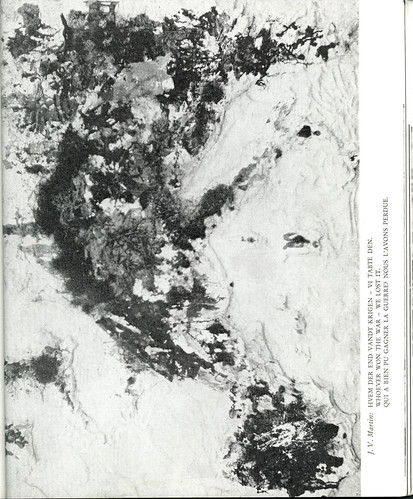
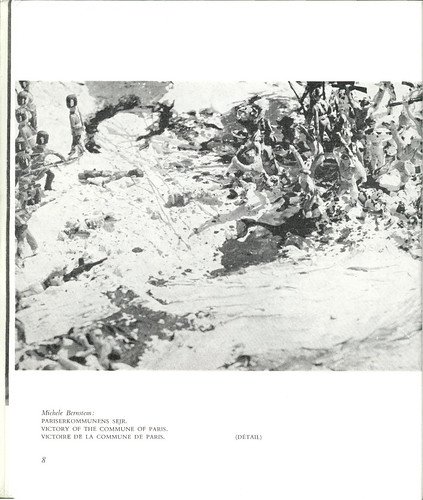


Share this via demonoid!
at 2:38 PM
Claudia Willke - Slavoj Zizek - Liebe Dein Symptom wie Dich selbst (1996)
Thursday, April 26, 2007
 Another documentary about the slowenian philosopher and Lacan-admirer Slavoj Zizek.
Another documentary about the slowenian philosopher and Lacan-admirer Slavoj Zizek.



Share this via demonoid/karagarga!
at 9:40 PM
Christian Volckman - Renaissance (2006)
 In the labyrinthine streets of 21st century Paris, where every move is monitored and ever action recorded, a mysterious kidnapping sets into motion a catastrophic series of events that could ultimately prove the downfall of civilization. The year is 2054, and the Avalon Corporation has securely woven its way into every aspect of modern living by making youth and beauty the most valued commodity around. Troubles arises in the City of Lights when a high-profile scientist named Ilona (voice of Romola Garai) is kidnapped, and policeman Barthélémy Karas (voice of Daniel Craig) is assigned the task of solving the case. As his investigation leads Karas down a menacing path where death lurks around every bend, he soon discovers that events that took place in 2006 have cast a dark shadow over the future of humankind. A film that mixes Blade Runner aesthetics with stark, Sin City-style visuals, Renaissance was filmed using motion-capture animation and features extravagant production design by Alfred Frazzani (Immortel Ad Vitam). AMG
In the labyrinthine streets of 21st century Paris, where every move is monitored and ever action recorded, a mysterious kidnapping sets into motion a catastrophic series of events that could ultimately prove the downfall of civilization. The year is 2054, and the Avalon Corporation has securely woven its way into every aspect of modern living by making youth and beauty the most valued commodity around. Troubles arises in the City of Lights when a high-profile scientist named Ilona (voice of Romola Garai) is kidnapped, and policeman Barthélémy Karas (voice of Daniel Craig) is assigned the task of solving the case. As his investigation leads Karas down a menacing path where death lurks around every bend, he soon discovers that events that took place in 2006 have cast a dark shadow over the future of humankind. A film that mixes Blade Runner aesthetics with stark, Sin City-style visuals, Renaissance was filmed using motion-capture animation and features extravagant production design by Alfred Frazzani (Immortel Ad Vitam). AMG


 Share Renaissance via demonoid/karagarga!
Share Renaissance via demonoid/karagarga!
at 9:26 PM
Harun Farocki - Die Worte Des Vorsitzenden [The Words of The Chairman] (1967)
Wednesday, April 25, 2007
 I was on a ship - this sounds like a novel: I had just embarked for Venezuela on June 2, 1967 as the Shah of Iran was arriving in West Berlin. There were protests, a student was shot, and a new form of opposition movement came into existence. The idea for this film came to me while I was still aboard the ship. The film is structured like acommercial. The film takes a metaphor literally: words can become weapons. However, it also shows that these weapons are made of paper. The weapon spoiled everything for the Shah and his wife, theyare wearing paper bags on their heads with faces drawn on them - the kind of bags worn by Iranian students during demonstrations to hide their identity from the Savak, the Iranian Secret Service. When I showed this film to the audiences in the late Sixties, it was highly praised. I think people understood then that over obviousness is also a form of irony. This capacity was lost a few years later. I think it's coming back today.
I was on a ship - this sounds like a novel: I had just embarked for Venezuela on June 2, 1967 as the Shah of Iran was arriving in West Berlin. There were protests, a student was shot, and a new form of opposition movement came into existence. The idea for this film came to me while I was still aboard the ship. The film is structured like acommercial. The film takes a metaphor literally: words can become weapons. However, it also shows that these weapons are made of paper. The weapon spoiled everything for the Shah and his wife, theyare wearing paper bags on their heads with faces drawn on them - the kind of bags worn by Iranian students during demonstrations to hide their identity from the Savak, the Iranian Secret Service. When I showed this film to the audiences in the late Sixties, it was highly praised. I think people understood then that over obviousness is also a form of irony. This capacity was lost a few years later. I think it's coming back today.
Harun Farocki





Share this via karagarga or demonoid!
at 11:35 AM
Harun Farocki - Videogramme einer Revolution AKA Videograms of a Revolution (1992)
In Europe in the fall of 1989, history took place before our very eyes. Farocki and Ujica's "Videograms" shows the Rumanian revolution of December 1989 in Bucharest in a new media-based form of historiography. Demonstrators occupied the television station [in Bucharest] and broadcast continuously for 120 hours, thereby establishing the television studio as a new historical site. Between December 21, 1989 (the day of Ceaucescu's last speech) and December 26, 1989 (the first televised summary of his trial), the cameras recorded events at the most important locations in Bucharest, almost without exception. The determining medium of an era has always marked history, quite unambiguously so in that of modern Europe. It was influenced by theater, from Shakespeare to Schiller, and later on by literature, until Tolstoy. As we know, the 20th century is filmic. But only the videocamera, with its heightened possibilities in terms of recording time and mobility, can bring the process of filming history to completion. Provided, of course, that there is history. (Andrei Ujica) Harun Farocki conceived of and assembled Videograms of a Revolution together with Andrei Ujica. Ujica, who was born in Timisoara in 1951, is a Rumanian writer who has been living in Germany since 1981, where he is a lecturer in literature and media theory. He has good connections to Rumanian friends and colleagues who not only opened up the television archives to the authors but also enabled them to get in contact with cameramen from state film studios and with numerous amateur videographers who had documented the events on the streets of Bucharest, often from the roofs of highrise buildings. "If at the outbreak of the uprising only one camera dared to record," said Farocki, "hundreds were in operation on the following day."






Share Videograms of a Revolution via karagarga or demonoid!
at 11:30 AM
No-Stop City, By Archizoom Associati (2006)
Saturday, April 21, 2007
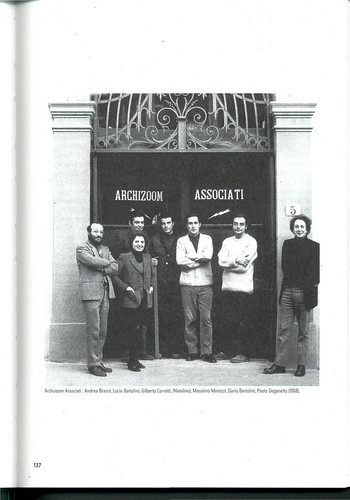 In 1969, the Archizoom group, while carrying out an experimental work in the field of design, also undertook a research on environment, mass culture and the city, which led to the project No-Stop City. For the first time, a book presents this work which coincides with the zenith of the Italian Radical movement. Gathering all the texts and drawings, this book reveals to us the "Endless City" intertwining architecture with objects and the triumphant consumer society, giving an interpretation where the repetition of a single central element, a building or a group of objects makes up, through a play of mirrors, a catatonic environment, a boundless supermarket, a now reached future to be composed. No-Stop City is a qualityless city in which individual can achieve his own housing conditions as a creative, freed and personal activity. The theoretical project was first published in the review Casabella in 1970, under the title: "City, assembly line of social issues, ideology and theory of the metropolis". As Andrea Branzi puts it, this projects implements "the idea of the fading away of architecture within metropolis". No-Stop City is a critical Utopia, a model of global urbanization where design is the essential conceptual instrument used in the mutation of living patterns and territories. This "endless city" is organized the same way as a factory or a supermarket. It presents an iterative pattern with multiple centres and a neutral, even and unbroken. No-Stop City offers itself as a kind of car park fitted out with inhabitable furniture whose use can be adapted to the circumstances. Interior spaces, air-conditioned and artificially lit, allow the organisation of new inhabiting typologies, open and unbroken, intended for new forms of association and community life. "Considering architecture as an intermediate stage of urban organization that has to be overstepped, No-Stop City establishes a direct link between metropolis and furnishing objects: the city becomes a series of beds, tables chairs and cupboards; the domestic and urban furniture fully coincide. To qualitative utopias, we oppose the only possible utopia: that of Quantity" (Andrea Branzi) *Archizoom Associati(Andrea Branzi, Gilberto Corretti, Paolo Deganello, Massimo Morozzi, Dario & Lucia Bartolini), first group of the Italian Radical Architecture movement (1966-1974).
In 1969, the Archizoom group, while carrying out an experimental work in the field of design, also undertook a research on environment, mass culture and the city, which led to the project No-Stop City. For the first time, a book presents this work which coincides with the zenith of the Italian Radical movement. Gathering all the texts and drawings, this book reveals to us the "Endless City" intertwining architecture with objects and the triumphant consumer society, giving an interpretation where the repetition of a single central element, a building or a group of objects makes up, through a play of mirrors, a catatonic environment, a boundless supermarket, a now reached future to be composed. No-Stop City is a qualityless city in which individual can achieve his own housing conditions as a creative, freed and personal activity. The theoretical project was first published in the review Casabella in 1970, under the title: "City, assembly line of social issues, ideology and theory of the metropolis". As Andrea Branzi puts it, this projects implements "the idea of the fading away of architecture within metropolis". No-Stop City is a critical Utopia, a model of global urbanization where design is the essential conceptual instrument used in the mutation of living patterns and territories. This "endless city" is organized the same way as a factory or a supermarket. It presents an iterative pattern with multiple centres and a neutral, even and unbroken. No-Stop City offers itself as a kind of car park fitted out with inhabitable furniture whose use can be adapted to the circumstances. Interior spaces, air-conditioned and artificially lit, allow the organisation of new inhabiting typologies, open and unbroken, intended for new forms of association and community life. "Considering architecture as an intermediate stage of urban organization that has to be overstepped, No-Stop City establishes a direct link between metropolis and furnishing objects: the city becomes a series of beds, tables chairs and cupboards; the domestic and urban furniture fully coincide. To qualitative utopias, we oppose the only possible utopia: that of Quantity" (Andrea Branzi) *Archizoom Associati(Andrea Branzi, Gilberto Corretti, Paolo Deganello, Massimo Morozzi, Dario & Lucia Bartolini), first group of the Italian Radical Architecture movement (1966-1974).
Andrea Branzi
Andrea Branzi (Florence, 1938) is an architect, a graphic designer and a theorist. He has been living and working in Milan since 1073. He is one of the protagonists of radical Italian Architecture who influenced a whole generation of architects from Franck O. Gehry to Daniel Libeskind, from Rem Koolhaas to Bernard Tschumi. He contributed to the creation of the Archizoom group, of which he was a member from 1964 to 1974. His "Radical Notes", published in the review entitled Casabella, participated in the theoretical debate of that period. From 1974 to 1976, Branzi became a member of Global Tools, a counter-school of architecture and design. Associated to studios of experimental industrial design as early as the end of the 60's (first Alchimia, then Memphis), Branzi has always been concerned with design research and promotion, which implies, to him, fresh relationships between men and objects. From 1983 to 1987, he directed the review entitled Modo and, in 1987, he was awarded the Compasso d'Oro for the whole of his career. He is the author of numerous publications such as La casa calda (1982), Animali domestici: lo stile neo-primitivo (1986), Nouvless de la métropole froide (1991) and Il design italiano 1964-1990 (1996), and has also curated many exhibitions. In parallel, Andrea Branzi has continued to conduct projects in architecture and urban planning through the concept of "weak urbanization".
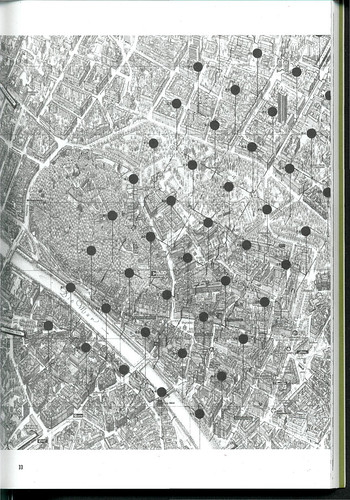
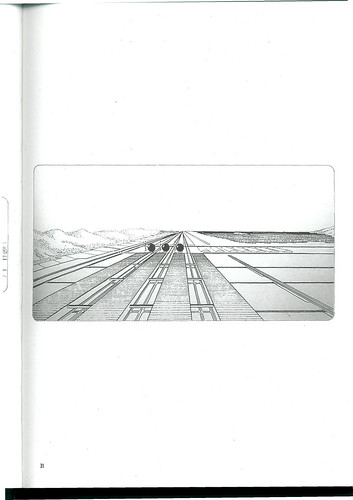
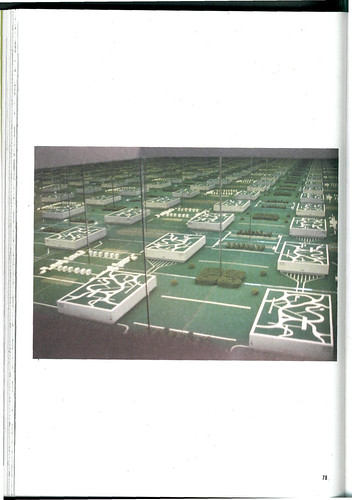
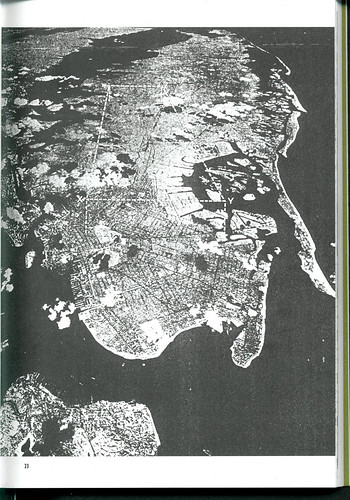


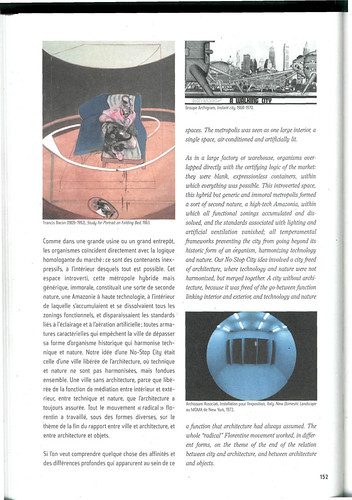

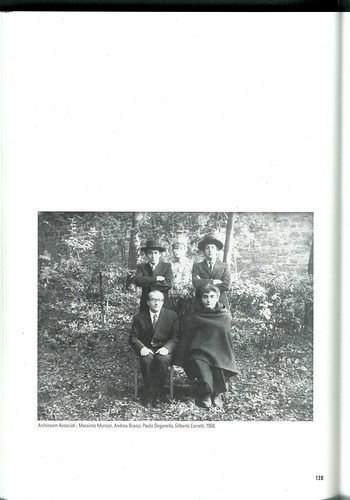
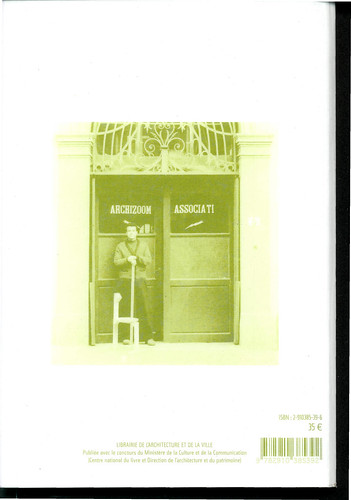
Share No-Stop City via demonoid or karagarga(sign up here)!
at 8:35 PM
Harun Farocki - Leben - BRD aka How to Live in the German Federal Republic (1990)
A critical dissection of modern life in Germany. Composed of thirty-two short scenes taken from instructional and training classes (on everything from stripping, to childbirth, to police tactics), Farocki's intention is to reveal Germany as a place where nothing occurs without rehearsal and preparation.
The author assembles a genre picture of the contemporary FRG with shots of scenes where life is rehearsed, ability/durability is tested. Wherever one looks, people appear as actors playing themselves; they take on roles. A play in the theater of life made up of training courses, fitness tests for things and people. Be it in birth preparation classes for expectant parents or in practice runs for sales talks, on the military training ground or during role-plays for educational purposes. Everywhere the incessant effort to be prepared for the emergency of "reality" can be felt. How To Live In The FRG assembles out of a wealth of details a picture of a society in which childbearing and dying, crying and taking care of people, crossing streets and killing are taught and learned in state or private institutions, indeed have to be learned. The real mechanical ballet is not danced by machines but by people, who move to a music that feeds on bombastic phrases from the realms of social work, bureaucracy and therapy. All together, the collected scenes appear to support the view that a mentality of insurance and providing for the future prevails in the FRG, a country in which happiness as well as misery are supposed to be disciplined by means of social techniques and freed from any measure of unpredictability. And yet How To Live In The FRG goes beyond such an interpretation. The participants in the games, tests, and therapy sessions are not degraded into pieces of evidence for some theory or other. They retain, to varying degrees, something of their dignity. This is a result of Farocki's working method:he has edited the scenes in such a way that even the most nonsensical occurrences as it were explain themselves. (Dietrich Leder, broadcast on February 23, 1990)


Thanks to the original uploader at karagarga! Share this via demonoid!
at 1:48 PM
Harun Farocki - Wie man sieht AKA As You See (1986)
In As You See, Farocki searches for those instances and facts in the history of technology that have been overlooked or ignored, also exploring the ambivalent relationship between technologies developed for civil use and those designed for military purposes.
Thus the film for instance describes how in the 1970's workers at the British arms factory Lucas Aerospace attempted to develop socially useful products to replace the company's military output.
Rather than following a linear argument, this essay-film juxtaposes disparate images and weaves them into a mosaic-like structure which makes it possible for the viewers to make their own connections between the different images as well as between the images and the commentary.
My film As You See is an action-filled feature film. It reflects upon girls in porn magazines to whom names are ascribed and about the nameless dead in mass graves, upon machines that are so ugly that coverings have to be used to protect the workers' eyes, upon engines that are too beautiful to be hidden under the hoods of cars, upon labor techniques that either cling to the notion of the hand and the brain working together or want to do away with it.
Harun Farocki


Thanks to original uploader at karagarga! Share this via demonoid!
at 12:55 PM
Harun Farocki - Stilleben AKA Still Life (1997) (2/8)
Thursday, April 19, 2007
According to Harun Farocki, today's photographers working in advertising are, in a way, continuing the tradition of 17th century Flemish painters in that they depict objects from everyday life - the "still life". The filmmaker illustrates this intriguing hypothesis with three documentary sequences which show the photographers at work creating a contemporary "still life": a cheese-board, beer glasses and an expensive watch.
This remarkable film by Harun Farocki is a powerful essay and commentary on contemporary life. It compares the still-lifes of the Dutch painters with the still-lifes of today: Photographs for advertisements for cheese, beer and watches. Farocki's film is about objects because, according to the director, "Gods and heroes are no longer imaginable." Using behind-the-scenes glimpses of modern advertising offices, where employees toil at the proper placement of objects for maximum sales effect, Farocki presents a vision of our reality in which objects bear witness to their producers. In these objects is a new image of man. With English commentary.


Share Still Life via demonoid or visit this link to become a member of karagarga, where i initially got this. If you want a demonoid invite, post here.
at 7:02 AM